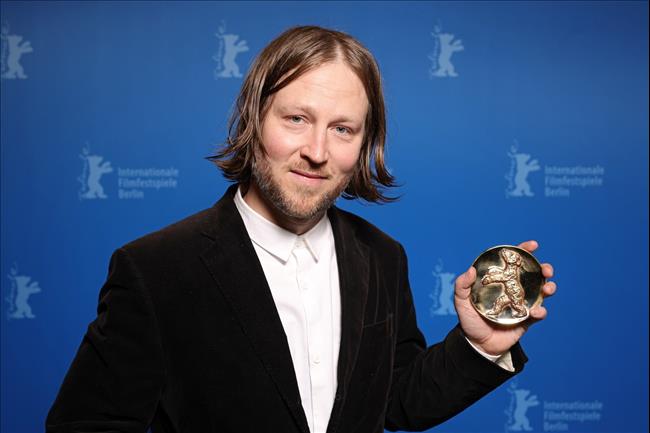
Review of ‘Unrest,’ an intriguingly minimalist chronicle of nineteenth-century anarchy
The second feature by Swiss director Cyril Schäublin (‘Those Who Are Fine’) premiered earlier this year at the Berlinale and made its U.S. debut at the New York Film Festival.
It’s difficult to think of a finer title for writer-director Cyril Schäublin’s second movie, which portrays the political fury bubbling beneath the surface of a tranquil, picturesque manufacturing town in late-nineteenth-century Switzerland.
That hamlet, located beside the Jura Mountains, is home to a factory where workers methodically hand-assemble watches, adjusting the tiny balance wheel, known as an unrueh (unrest), with the scientific perfection for which the Swiss are famous. The true unrest, however, is taking place all around them, as the emerging anarchist movement seizes control of both the factory and the neighborhood, pitting the employees — virtually all of whom are women — against the powers that be who run everything like clockwork, converting humanity to machines.

The film occasionally shifts its focus to two of the townspeople caught up in the struggle, the young watch assembler Josephine (Clara Gostynski) and real-life Russian anarchist Pyotr Kropotkin (Alexei Evstratov), but their story is only part of a larger one depicting Western Europe on the verge of transformation, with seeds firmly planted for the labor and feminist movements that would explode over the next century.
Unrest is thus both a political and a historical film. But it’s also quiet and consequently very Swiss, lacking the flaming language of great socialist dramas like Bernardo Bertolucci’s 1900 or Warren Beatty’s Reds.
Schäublin is more influenced by Robert Bresson, hiring non-professional performers and keeping passions muted while only hinting at a possible romance between Pyotr and Josephine. He also bears the influence of the French directing duo Jean-Marie Straub and Danièle Huillet, who used Brechtian distancing techniques to convey their socialist narratives, with characters reciting texts rather than saying their lines.
While the drama never exactly ignites, Schäublin keeps us constantly fascinated with his detailed historical recreations and keen observations on science, manufacturing, and technology, and how they weighed upon the souls of workers and owners alike. In the factory, Josephine and her fellow watchmakers are not only on the clock all day long, but their every gesture is measured down to the exact second, in a drive for industrial efficiency that, decades later, would come to be known as Fordism. The town itself is on the clock as well — actually several different clocks bearing different time signatures, with a telegraph message providing the precise time on the hour.
The key dilemma raised by anarchists appears to be how humans fit into this equation, as they have established a kind of collective action and mutual dependence that allows them to strive for universal workers’ rights while maintaining a strong feeling of community. Pyotr, who first appears on the factory doorstep as a visiting cartographer, is in fact a key ambassador of the Russian anarchist movement — he would famously pen several tracts and books in the decades that followed — and the map he’s drawing isn’t just any old map, but a detailed chart of anarchy in the region.
It’s as if the town and Switzerland itself were in the midst of a seismic political shift, and Schäublin reveals how the ruling class is doing all it can to maintain the status quo. While the anarchists try to turn the tools of the capitalists against them, using telegrams to spread the word and photographs as an early form of agitprop, the managers and elected officials — all of them men, of course — employ the rather friendly local police force, as well as other means, to keep the revolution in check.
Much of the political conflict goes unnoticed or unheard or is spoken softly. In Unrest, there are no huge fights, no people pounding their plowshares into swords to oppose the power. The political upheavals here are being methodically crafted for the future, much like the watches that Josephine and the other women piece together in the factory, setting minuscule pins in place to begin the mechanism operating.
Schaüblin’s filmmaking is at the same careful remove as his storytelling: Characters are typically framed off-center or in the background by cinematographer Silvan Hillmann, to the point that it’s sometimes hard to tell who the real protagonists are. The director used similar methods in his 2017 début, Those Who Are Fine, which tackled contemporary malaise in a Switzerland of stifling call centers and the criminally neglected elderly, using a distanced approach to convey the alienation of modern life.
Even though the two films are visually similar, Unrest is unquestionably the most hopeful of the two, set in the past when a better world, and perhaps a nice love tale, are still attainable. It’s less concerned with political grandstanding and more interested in presenting how politics are lived on a daily basis — and how, in today’s lingo, microaggressions on the job may snowball into revolution. The video is a piece of finely realized group portraiture, catching one moment in time amid the winds of change, much like the images of Pytor, Josephine, and other locals that the villagers’ treasure as precious keepsakes.
